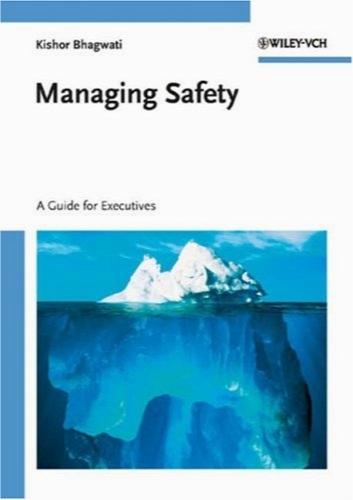Managing safety : a guide for executives
- نوع فایل : کتاب
- زبان : انگلیسی
- مؤلف : Kishor Bhagwati
- ناشر : Weinheim : Wiley-VCH
- چاپ و سال / کشور: 2006
- شابک / ISBN : 9783527315833
Description
Preface. 1. Introduction. 2. Consequences of Accidents. 1. The victim himself. 2. His family. 3. His colleagues. 4. His superiors. 5. The worker morale. 6. The company. 3. A Small Experiment. Step 1. Step 2. Step 3. Results. 4. Man or Machine? Bhopal, India. Chernobyl. "The Herald of Free Enterprise". 5. Why Do Accidents Happen? 6. The Underlying Reasons. 7. How to Make People not Take Risks. 8. The Myths of Management. 9. Who "Makes" Safety? W.hat is the Safety Professional responsible for? 1. Improving the attitude of workers towards safety. 2. Keeping the managers' heads free of all safety matters. 3. Discovering the need for safety training programmes of individuals. 4. Organising site-wide safety seminars on selected topics. 5. Writing the Company Safety Policy. 6. Checking for compliance with Site Safety Policy. 7. Bearing responsibility for site safety performance. 8. Investigating all accidents at site and writing investigation reports. 9. Coordinating safety activities of the site. 10. Chairing the Central Safety Committee. 11. Participating in and coordinating outside safety audits. 12. Being the information source for safety-related legislation and appliances. 13. Being the advisor to management on safety issues. Conclusion. 10. Management Tools. 11. Pillar 1: Total Management Commitment. 1. Interest. 2. Involvement. 3. Investment. 12. Pillar 2: Safety Visits - The Basics. 13. Safety Visits - The System. 14. Safety Visits - The Procedure. 1. Follow all safety rules. 2. Build a Safety-visit Team. 3. Entering the area to be visited. 4. Approaching a worker. 5. The talking sequence. 6. Noting down. 7. Thanking the worker. 8. Report writing. 15. The Art of Talking. 16. Pillar 3: Involving the Worker. 17. Brainstorming. 1. Criticism. 2. Free-wheeling. 3. Quantity. 4. Refining the information. 18. Pillar 4: Accident Investigation. 19. The Methodology of an Accident Investigation. 1. When to start investigating? 2. The investigation team. 3. The investigating team leader. 4. No culprit is to be sought. 5. The investigation report. 20. The Art of Questioning. 21. Accident or Incident? 22. Responsibility & Authority. 23. The Safety Committees. 24. Lock Out - Tag Out. 25. Communications. 26. Other Managerial Tools. The Permit-to-Work System. Operating Procedures. Contractors. Rewards and Incentives. 27. How to Proceed. To Do List for the Top Management. To Do List for the Middle Management in Production. To Do List for Nonproduction Management (HR, IT, Finance, etc.). Appendix 1: Understanding the Numbers in Safety Statistics. Appendix 2: Job Description of a Safety Professional. Appendix 3: Safety Visit Reports. Appendix 4: Accident Investigation Reports. Appendix 5: About audit and audits. Appendix 6: Safety Visit Control Sheet. Index.
Aimed primarily at top and middle management, this book adopts the new approach to preventing serious incidents rather than minimal compliance with regulations. It shows step-by-step how accidents can be avoided with little effort and money, resulting in an injury-free culture.


